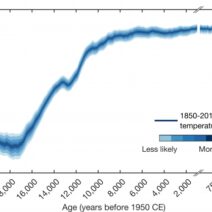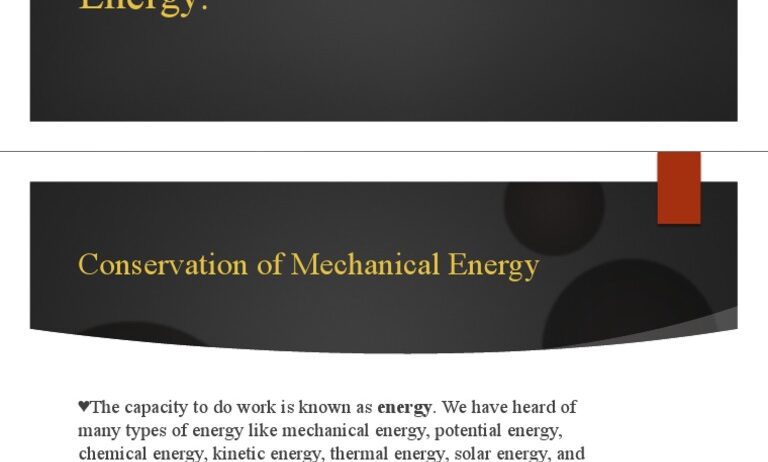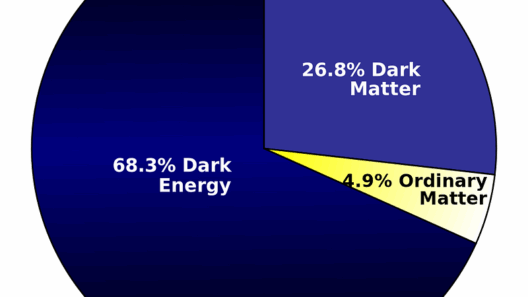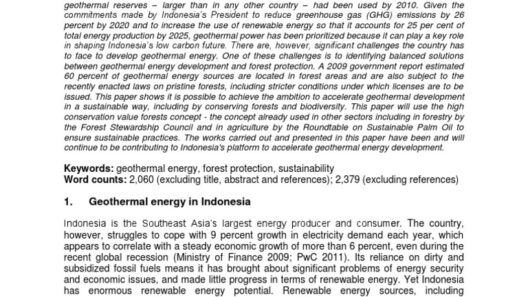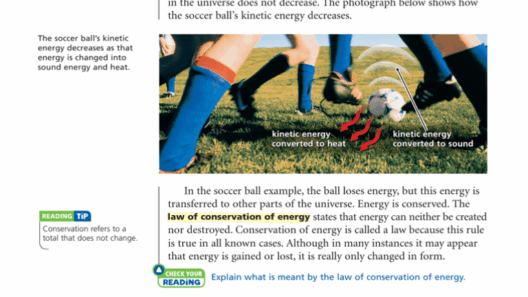The principle of conservation of mechanical energy is a fundamental concept in physics, which asserts that in a closed system, the total mechanical energy remains constant over time, provided that the only forces doing work are conservative forces. At its core, mechanical energy is the sum of kinetic energy, which is the energy of motion, and potential energy, which is the energy stored due to an object’s position or arrangement. This principle can be encapsulated succinctly in the equation: ME_initial = ME_final, where ME stands for mechanical energy.
To unravel the intricacies of this principle, it is essential to explore the different components that comprise mechanical energy. Kinetic energy (KE) is quantified by the equation KE = 1/2 mv², where m denotes mass and v represents the velocity of the object. This indicates that kinetic energy is directly proportional to the square of the velocity; thus, even a slight increase in speed can result in a substantial increase in kinetic energy.
Conversely, potential energy (PE) can take various forms, but gravitational potential energy is most commonly discussed. The equation for gravitational potential energy is given as PE = mgh, where g is the acceleration due to gravity and h is the height of the object above a reference point. This highlights the significance of height in determining potential energy; the higher an object is positioned in a gravitational field, the greater its potential energy.
When a system undergoes changes, energy can transform from one form to another, but the total mechanical energy remains invariant, barring external interference. For instance, when an object falls freely under the influence of gravity, its potential energy decreases as it descends, while its kinetic energy correspondingly increases. At the zenith of its trajectory, where it possesses maximum height, the object has maximum potential energy and minimal kinetic energy. Conversely, at its lowest point, the situation is reversed. This dynamic interchange exemplifies the law of conservation of mechanical energy in action.
Moving beyond theoretical aspects, it is enlightening to consider real-world applications of this principle. One prime example is in the realm of roller coasters, where conservation of mechanical energy plays a critical role. As the coaster ascends a steep hill, energy is stored as potential energy. When the coaster plummets downwards, this potential energy diminishes while kinetic energy surges, facilitating exhilarating speed and thrills as it navigates through loops and turns. The interplay of kinetic and potential energy not only defines the ride experience but also underscores the application of energy conservation in engineering design.
Another salient application is found in the context of pendulums. A simple pendulum moves back and forth, and its motion illustrates the conservation principle brilliantly. At the extremities of its swing, the pendulum has a maximum potential energy and zero kinetic energy. At the lowest point of its swing, however, the energy is purely kinetic. This cyclical transformation emphasizes not only conservation but also the harmonious interaction of forces within a mechanical system.
It is essential to differentiate between conservative and non-conservative forces when contemplating mechanical energy conservation. Conservative forces, such as gravitational and elastic forces, facilitate the transfer between potential and kinetic energy without loss. However, non-conservative forces, like friction and air resistance, dissipate energy in the form of heat, thus violating the principle of conservation. In practice, this means that energy is not just transformed but potentially lost in non-ideal systems, which is a critical consideration in engineering and sustainability efforts.
A pertinent example of a non-conservative force in action is the friction encountered during the rolling of a ball on a surface. As the ball rolls, some of its mechanical energy is transformed into thermal energy due to friction. Consequently, although mechanical energy is conserved in the idealized scenario devoid of friction, real-world scenarios require an acknowledgment of energy losses, which complicates the commonly stated conservation principle.
In further examining the implications of conservation of mechanical energy, one must also consider its influence on motion in multiple dimensions. For example, when analyzing the trajectory of projectiles, the principle remains applicable. The combination of horizontal motion and vertical motion leads to a profound understanding of how these energies interact in three-dimensional space. Trying to compute the precise trajectory necessitates a nuanced application of both kinetic and potential energy principles alongside equations of motion.
In conclusion, the conservation of mechanical energy is a pivotal concept that permeates various aspects of physics and engineering. It illustrates the interplay between kinetic and potential energy, highlighting the stability of total mechanical energy in isolated systems. Real-world applications, such as roller coasters and pendulums, vividly demonstrate the practical significance of this principle. Moreover, understanding the distinction between conservative and non-conservative forces is critical for comprehending how energy conservation functions within complex systems. Thus, the principle not only serves as a cornerstone of mechanical physics but also embodies the fundamental interactions that govern natural phenomena.

